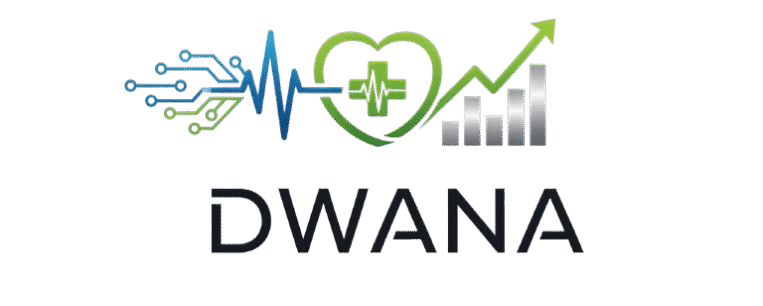How to Protect Your Business from AI-Powered Cyber Threats
The digital arms race has entered a new era. Cybercriminals are no longer just skilled hackers working alone; they are now orchestrators of sophisticated artificial intelligence systems that can learn, adapt, and attack at a scale and speed previously unimaginable. This evolution in threat technology means that traditional security measures are no longer sufficient. Protecting your organization requires a new playbook, one built on understanding and leveraging AI cybersecurity defenses to fight fire with fire. This comprehensive guide is designed for business leaders, entrepreneurs, and professionals worldwide. We will demystify the nature of AI-powered cyber threats, provide a actionable framework for building a resilient defense, and explore how you can turn advanced technology into your strongest shield. Whether you’re operating in the U.S., Canada, the U.K., Australia, or the UAE, the insights here will help you fortify your business against the most advanced dangers in the digital landscape.
The New Frontier: Understanding AI-Powered Cyber Threats
To defend against a clever adversary, you must first understand its capabilities. AI-powered threats are not a single tool but a suite of technologies that augment every stage of a cyberattack, making them more effective, efficient, and evasive.
How Attackers Weaponize AI
Malicious actors are using AI to automate and enhance their campaigns in several critical ways:
-
Hyper-Realistic Phishing and Social Engineering: AI algorithms can analyze vast datasets from social media and data breaches to craft impeccably written, highly personalized phishing emails (a tactic known as spear-phishing). Deepfake audio and video technology can now impersonate CEOs or trusted partners to authorize fraudulent wire transfers or divulge credentials.
-
Automated Vulnerability Discovery: AI systems can continuously scan software, networks, and systems for weaknesses far faster than any human team. They can identify and exploit zero-day vulnerabilities before developers even have a chance to issue a patch.
-
Intelligent Malware and Evasion: AI-powered malware can learn from its environment. It can change its code to evade signature-based antivirus detection, lie dormant until it identifies a specific target, or only execute its payload when it detects it’s not in a sandboxed environment.
Why Traditional Security Fails
Legacy security tools operate on predefined rules and known threat signatures. They are static. An AI-powered threat, however, is dynamic and adaptive. It can test defenses, learn what triggers an alert, and modify its behavior in real-time to bypass them. This fundamental shift is what makes AI for cybersecurity not just an advantage but an absolute necessity for modern business protection.
Building Your AI-Powered Defense: A Strategic Framework
Adopting AI cybersecurity solutions is not about buying a single product. It’s about building a layered, intelligent ecosystem that can predict, prevent, detect, and respond to threats autonomously.
Layer 1: AI-Driven Threat Detection and Prevention
This is the most common application of AI in security. These systems move beyond simple pattern matching.
-
User and Entity Behavior Analytics (UEBA): AI baselines the normal behavior of every user and device on your network. It can then flag anomalous activity in real-time—such as a user logging in from a foreign country at 3 a.m. and downloading massive files—that would indicate a compromised account.
-
Next-Generation Antivirus (NGAV): Unlike traditional AV, NGAV uses AI and machine learning to analyze files for malicious behavior rather than just looking for known malicious code. This allows it to stop never-before-seen threats like ransomware and zero-day exploits.
-
AI-Powered Email Security Gateways: These solutions scan inbound emails for sophisticated phishing attempts that bypass standard filters. They analyze language patterns, header information, and embedded links with a level of nuance that rule-based systems cannot achieve.
Layer 2: Automated Incident Response and Recovery
When a breach occurs, speed is everything. AI can shrink response times from days to seconds.
-
Security Orchestration, Automation, and Response (SOAR): SOAR platforms, supercharged by AI, can automatically quarantine an infected device, disable a compromised user account, isolate affected network segments, and even begin rolling back systems to a pre-attack state using clean backups. This contains the threat immediately, minimizing damage.
-
Predictive Analytics: AI can analyze global threat intelligence feeds to predict which industries or systems are likely to be targeted next. This allows your team to proactively patch vulnerabilities and shore up defenses before an attack wave hits.
Layer 3: Proactive Vulnerability Management
Instead of constantly being on the back foot, use AI to get ahead of the problem.
-
Prioritization with Context: AI tools can scan your infrastructure, not just to find vulnerabilities, but to intelligently prioritize them based on context. It considers factors like: Is the vulnerable system internet-facing? Does it contain sensitive data? Is there a known exploit being used in the wild? This stops your team from wasting time on low-priority issues and focuses them on critical fixes. A report by IBM’s Security X-Force often highlights that prioritizing patching based on context is a key differentiator for resilient organizations.
Implementing an AI Cybersecurity Strategy: A Step-by-Step Guide
Adopting these technologies requires a thoughtful approach. Here’s how to get started.
Step 1: Assess Your Current Posture and Data Health
You cannot protect what you do not know you have. Begin with a comprehensive audit of your digital assets, data flows, and existing security controls. Crucially, AI models require high-quality, organized data to be effective. Ensuring you have clean and accessible log data from networks, endpoints, and applications is the foundational step.
Step 2: Start with High-Impact Use Cases
You don’t need to overhaul your entire security stack at once. Identify areas of greatest pain or risk.
-
Is phishing your biggest threat? Start with an AI-powered email security solution.
-
Concerned about insider threat or credential theft? Implement a UEBA tool.
-
Overwhelmed by alert fatigue? deploy an AI-driven SIEM or SOAR platform to correlate alerts and automate responses. Starting with a focused pilot project demonstrates value and builds the case for broader investment.
Step 3: Choose Between Managed and In-House Solutions
Not every business has the resources to build and manage an AI security operations center (SOC).
-
Managed Detection and Response (MDR) Services: These providers offer AI cybersecurity as a service. They provide the technology, and their expert analysts manage it for you, delivering curated alerts and response actions. This is an excellent option for SMBs without a large security team.
-
In-House Deployment: Larger enterprises with mature security teams may choose to purchase and operate AI security platforms directly, integrating them deeply with their existing infrastructure.
Step 4: Foster a Culture of Security Awareness
Technology is only one layer of defense. Humans are often the first target. Continuous training on identifying sophisticated AI-powered phishing attempts is essential. Simulated phishing campaigns powered by AI can themselves be used to test and educate employees, creating a human firewall that complements your technical controls.
Future-Proofing: The Next Wave of AI Security
The evolution of AI for cybersecurity is rapid. Staying ahead means looking at what’s next.
-
Generative AI for Defense: Just as attackers use generative AI to create phishing emails, defenders can use it to generate secure code, automatically write rules for security policies, and create realistic training scenarios for analysts.
-
Zero-Trust Architecture with AI: The Zero-Trust model (“never trust, always verify”) is supercharged by AI. AI can continuously verify user identity, device health, and access permissions based on real-time risk assessment, making adaptive access decisions millions of times a day.
Frequently Asked Questions (FAQ)
1. Is AI cybersecurity only for large enterprises?
Absolutely not. While large companies were early adopters, the market has evolved. Many vendors now offer cloud-based, subscription-model AI security tools tailored for small and medium-sized businesses (SMBs). The rise of MDR services has also made enterprise-grade AI protection accessible and affordable for organizations of all sizes.
2. Can AI in cybersecurity replace human analysts?
No, and it’s not meant to. The goal of AI is to augment human analysts. It handles the tedious, high-volume tasks of sifting through millions of logs and alerts, surfacing only the most critical threats for a human to investigate. This allows your skilled security professionals to focus on strategic decision-making, threat hunting, and complex incident response.
3. What are the ethical concerns around AI security?
Key concerns include data privacy (as AI systems require vast data to train), algorithmic bias (where an AI might unfairly flag activity from certain regions or groups), and transparency (understanding why the AI made a certain decision). Choosing reputable vendors with ethical AI principles is crucial.
4. How much does implementing AI security cost?
Costs vary widely based on the solution, the size of your organization, and your deployment model. Expenses can range from a few dollars per user per month for a cloud-based email filter to millions for a full enterprise suite. The critical question is not the cost of implementation, but the cost of a breach you could have prevented.
5. Where is the best place to start with AI-powered security?
The most impactful and common starting point is email security. Since a vast majority of attacks start with a phishing email, implementing an AI-powered filter that catches advanced threats provides immediate and significant risk reduction.
Conclusion: Embrace AI or Be Left Behind
The paradigm of cybersecurity has irrevocably shifted. The question is no longer if you will be targeted by an AI-powered threat, but when. Relying solely on traditional, static defenses is a recipe for disaster. The businesses that will thrive are those that embrace the power of AI cybersecurity to create a dynamic, intelligent, and resilient defense posture.
Protecting your business is no longer just an IT issue; it is a core strategic imperative that directly impacts your financial stability, brand reputation, and operational continuity. The journey begins with assessment, continues with strategic investment in the right technologies, and is sustained by a culture of vigilance. Don’t wait for a breach to be your wake-up call. Take proactive steps today to leverage AI, not as a futuristic concept, but as your most powerful ally in securing your business’s future.




